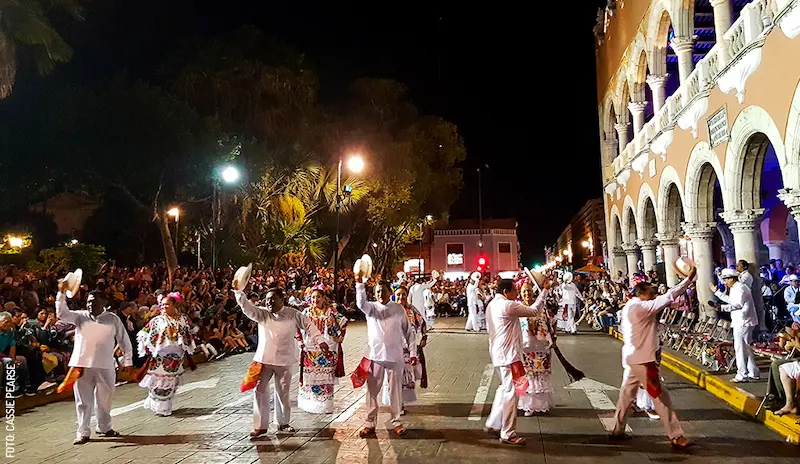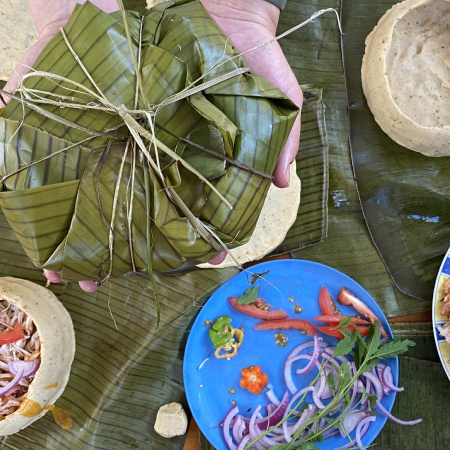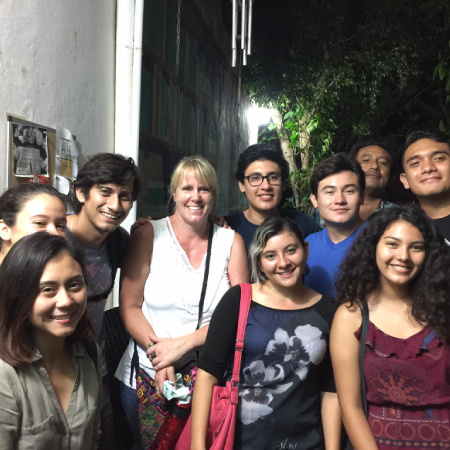
Yucatecan Vaquería
Enjoy our Vaquería Yucateca show: the traditional dance in Yucatán! Every monday of the year.
What is the Vaquería? The jarana is the typical dance of Yucatan.
There are two types: the 6×8 jarana is zapateada, it is the granddaughter of the Andalusian airs and daughter of the mestizo sounds; and the 3×4 jarana, which emerged later, being a waltz with the air of an Aragonese jota, from which it derives. In the beginning, the latter was exclusively danced, and as time went by, texts made with rhymes were added. The jarana is a tap dance without fixed steps or differentiation between men and women, and everyone can make their own dance creations.
The postures are upright due to the solemnity of the aboriginal dances, but in the waltzed parts they perform turns while raising their arms at right angles, like jota dancers, snapping their fingers representing Spanish castanets. Two hits of the timpani indicate that the dance has begun. If at the end of each revelry there are few couples left vying for first place in resistance, the people's euphoria spills over into an animation towards their favorite dancers through the galas, which consist of putting several hats on their heads, one on top of the other, symbolizing the crown as a prize.
It is common that in the middle of the dance, one of the dancers stops the music by saying out loud: “bomb!” At that moment he recites a humorous verse to his partner, always within the limits of decency. Originally from Spain, it represents a spark of ingenuity that causes an explosion of joy and coexistence.






